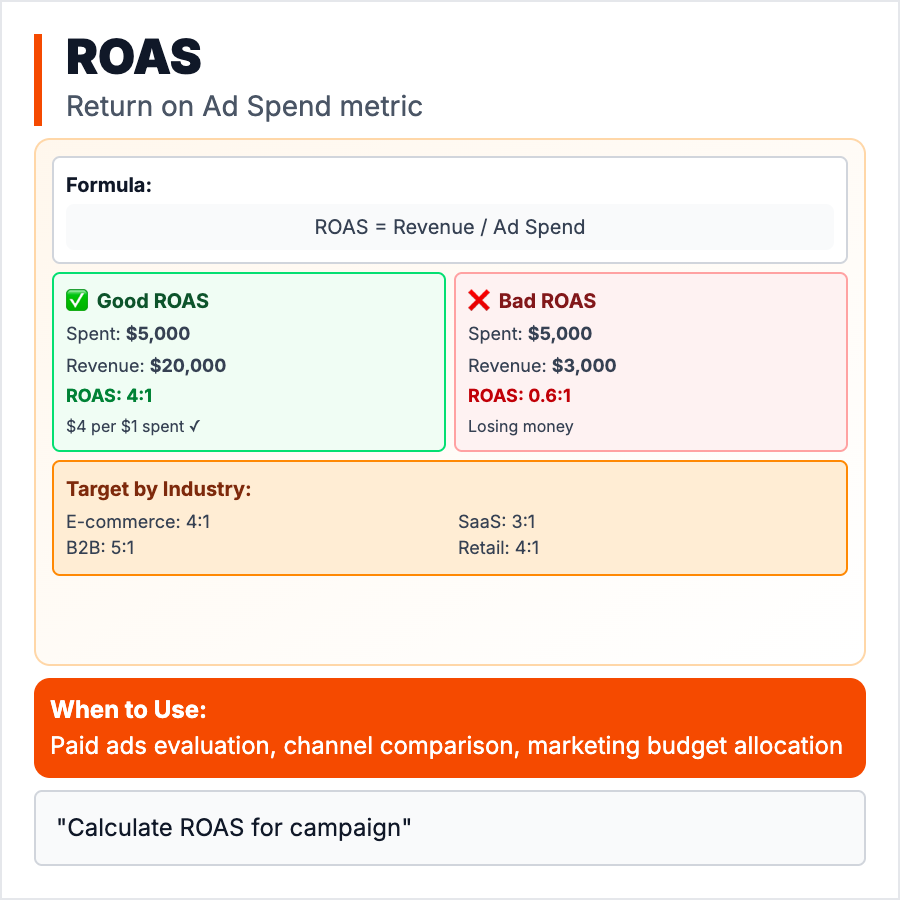
What is ROAS (Return on Ad Spend)?
ROAS (Return on Ad Spend) is how much revenue you generate for every dollar spent on advertising. If you spend $1,000 on ads and make $4,000 in revenue, your ROAS is 4:1 or 400%. It's the most direct measure of whether your ads are profitable. Unlike ROI, ROAS focuses specifically on advertising spend, not total costs.
When Should You Use This?
Track ROAS whenever you're running paid ads—Google, Facebook, LinkedIn, etc. It's crucial for deciding which ad campaigns to scale and which to kill. However, ROAS alone doesn't tell the full story—you also need to consider Customer Lifetime Value (LTV) and customer acquisition cost (CAC) to know if you're building a sustainable business.
Common Mistakes to Avoid
- •Optimizing for ROAS too early—when testing, focus on learning, not immediate profitability
- •Ignoring LTV—a 2:1 ROAS looks bad until you realize customers stay for 3 years
- •Comparing ROAS across channels directly—Facebook and Google Ads serve different purposes
- •Not accounting for attribution windows—revenue might come days/weeks after the ad click
- •Celebrating high ROAS without checking if you can scale it
Real-World Examples
- •SaaS founder: "We need 3:1 ROAS minimum because our LTV:CAC ratio requires it"
- •Ecommerce: "Black Friday ads hit 8:1 ROAS but normally we run at 4:1"
- •B2B: "LinkedIn ads show 2:1 ROAS but leads close at 40%, so it works"
Category
Marketing
Tags
metricspaid adsanalyticsgrowth